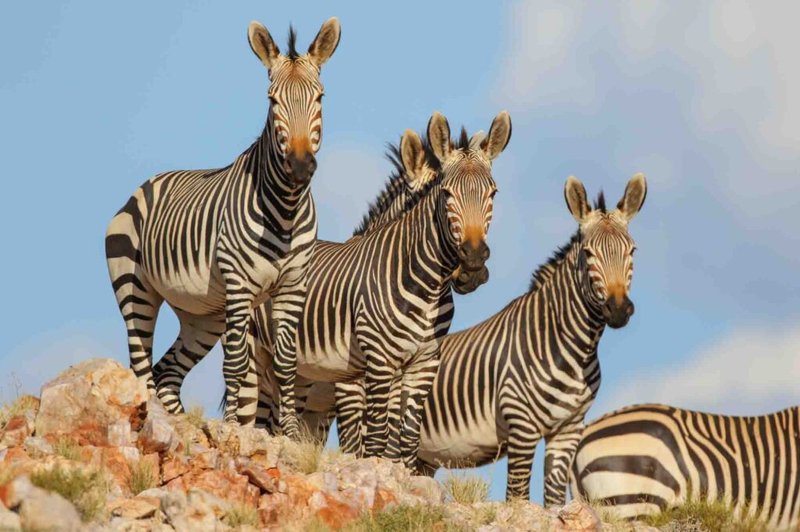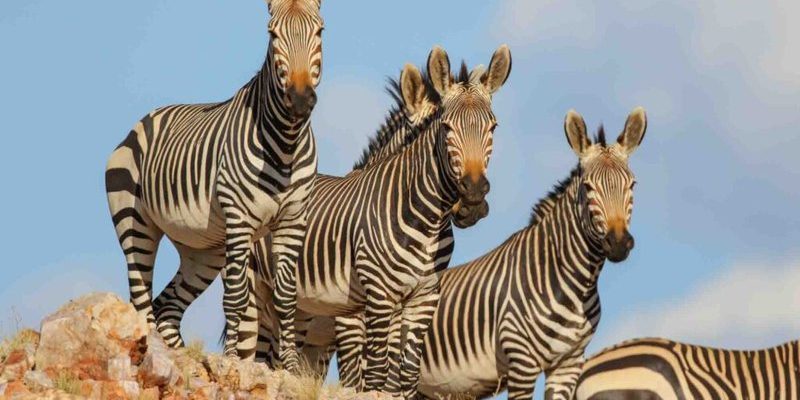
Mountain zebras are not just your average zebra; they’ve adapted to thrive in the rugged terrain of mountainous regions, where the challenges of food scarcity, steep slopes, and unpredictable weather can be daunting. So, how do they do it? Let’s dive into the unique characteristics and behaviors that help mountain zebras not just survive, but flourish in these tough conditions.
Physical Adaptations for Survival
Mountain zebras are built for life in the highlands. One of their most striking features is their stocky, muscular body. While they still have that classic zebra shape, they’re a bit shorter and more robust than their plains counterparts. This stockiness is essential; it gives them the strength needed to traverse steep, rocky landscapes. Imagine tackling a steep hill while trying to maintain your balance—having a strong body is crucial!
Their hooves also play a big role in survival. Unlike the softer hooves of some other horses, mountain zebras have hard, rounded hooves. This is more than just a quirk of their anatomy; it’s a vital adaptation that helps them grip rocky terrain. **Strong hooves** allow them to climb and navigate steep slopes where other animals might struggle. So, the next time you see a mountain zebra, appreciate those sturdy feet!
On top of that, mountain zebras have a thick coat that helps them withstand fluctuating temperatures. In high-altitude regions, it’s not just about harsh winters; even summer days can turn chilly at night. Their fur thickens during the cooler months to provide warmth, while in summer, it becomes lighter, helping to keep them cool. This incredible adaptability shows just how tuned in they are to their environment.
Behavioral Adaptations to Food Scarcity
Finding food in harsh environments can be a challenge, but mountain zebras have clever ways to adapt. These zebras are primarily grazers and usually feed on tough grasses. However, high altitudes often mean that vegetation is sparse and not always available. So, what do they do? They’ve become skilled at **seeking out hidden food sources**.
Instead of sticking to one spot, mountain zebras are known for their **nomadic behavior**. They roam across vast landscapes to find the best food available. This means that they might migrate up and down mountains depending on the season and food availability. Think of it like a search party—always moving to find the best banquet in town!
Additionally, these zebras are social animals, often forming small herds. This social structure helps them share information about food sources. When one zebra discovers a fresh patch of grass, the word spreads quickly, helping the entire group feed efficiently. It’s teamwork at its best! By working together, they can better navigate their challenging habitat.
Water Conservation Strategies
Water is another critical resource that’s often in short supply in mountainous areas. Mountain zebras have developed some impressive strategies to deal with this challenge. One of their key adaptations is their ability to go without water for extended periods. They often get the moisture they need from the grasses and plants they eat, which helps them stay hydrated without always relying on waterholes.
When they do need to drink, mountain zebras have a keen sense of where to find water sources, often traveling significant distances to reach a stream or river. Their strong legs and endurance allow them to trek to these locations, which can be essential during dry spells. It’s like having a built-in GPS—knowing exactly where to go for a drink!
Interestingly, mountain zebras can also adapt their behavior based on weather conditions. During extremely hot days, they’ll often rest in the shade, conserving energy and moisture until temperatures drop. This instinct to seek cooler spots and adjust their activities based on the environment demonstrates their **excellent survival instincts**.
Social Structures and Communication
Mountain zebras are incredibly social animals, and their **herd structures** play a crucial role in their survival. These groups typically consist of 5 to 20 individuals, led by a dominant stallion. The social bonds formed among herd members are vital—think of it like a close-knit family where everyone looks out for each other.
Communication is essential within these herds. Mountain zebras use a variety of vocalizations, body postures, and even facial expressions to convey messages. For instance, if one zebra spots a predator, it’ll give a warning call that alerts the rest of the group. Here’s the thing: staying alert and coordinated in the face of danger can make all the difference in survival.
Additionally, zebras often groom each other, which not only helps strengthen social ties but also serves as a way to reduce stress. It’s like bonding over a spa day! This social interaction is crucial for maintaining group cohesion and ensuring that everyone remains healthy and safe in their challenging environment.
Adaptations to Climate and Weather
Mountain zebras also face various weather challenges, from harsh sun to frigid nights. Their physical and behavioral adaptations to these climatic extremes are nothing short of remarkable. For starters, their thick, insulating coats serve two purposes: warmth during cold nights and protection from the sun during the day.
During the hot summer months, you might see mountain zebras seeking shelter under trees or in shady areas to escape the heat. They’ve learned to be smart about sun exposure, just like we might seek out shade or stay indoors during the hottest part of the day. This instinctual behavior helps them maintain their health during harsh conditions.
Moreover, mountain zebras have a unique way of dealing with rain. When storms hit, they often find higher ground to stay safe. By avoiding low areas prone to flooding, they manage to keep themselves dry and comfortable. It’s almost like having a built-in weather radar, allowing them to navigate their environment wisely.
Conservation Efforts and Challenges
Despite their incredible adaptations, mountain zebras face numerous challenges today. Habitat loss, poaching, and climate change are significant threats to their survival. Conservation efforts are underway, aimed at protecting their natural habitats and ensuring that these amazing creatures continue to thrive.
One important strategy involves establishing protected areas where mountain zebras can roam freely and safely. By creating national parks and reserves, conservationists aim to preserve the unique ecosystems these zebras depend upon. Additionally, education about the importance of this species fosters community involvement in conservation efforts.
Here’s the thing: protecting mountain zebras is not just about saving a single species; it’s about maintaining the entire ecosystem they inhabit. When we help one part of the environment, we contribute to the health and balance of the whole system. It’s a beautiful reminder of how interconnected we all are.
Mountain zebras are a prime example of nature’s resilience and adaptability. Their remarkable abilities to survive in harsh environments showcase not just their physical strengths, but also their clever behaviors and social structures. From their strong bodies and cooperative herds to their savvy foraging and communication skills, these zebras have everything they need to thrive in the wild.
As we continue to learn more about mountain zebras and the challenges they face, it’s crucial to support and advocate for their conservation. By doing so, we not only protect these remarkable animals but also contribute to the rich biodiversity of their habitats. So, the next time you see a zebra, take a moment to appreciate the incredible journey that brought it to survival in such extreme conditions!

